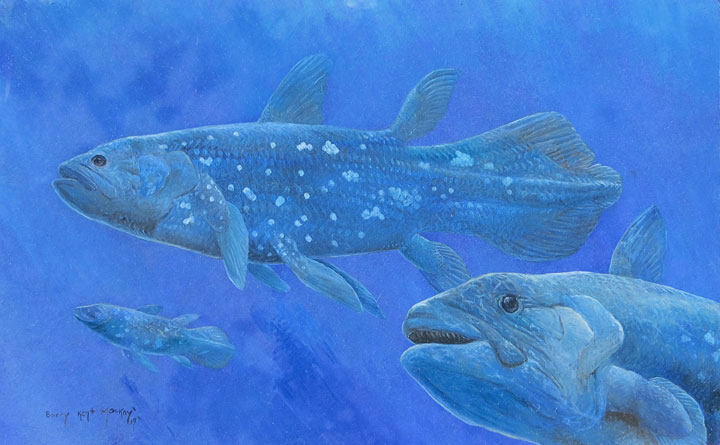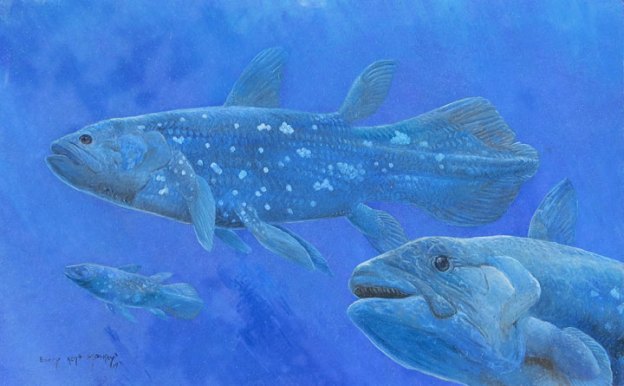While I primarily paint birds, all subjects interest me, as an artist, especially (but not exclusively) various species of wildlife, both common and rare, and, as is true here, those that evoke immense scientific and conservation interest. Coelacanths, also called “lobe-finned fish”, were, prior to 1938, regarded as an ancient group of animals that died out near the end of the Cretaceous period, some 66 million years ago, making them contemporaneous with large dinosaurs.
One can only wonder at the great shock experienced by Marjorie Courtenay-Latimer (1907 – 2004), a native of South Africa who, while fascinated by birds, will forever be associated with possibly the strangest discovery of a fish in history. While lacking formal education her knowledge of natural history was great enough to land her steady employment at the East London Museum, in Eastern Cape, South Africa, at age 24. She worked at collecting all manner of natural history specimens for the museum and put the word out among fisherfolk to alert her of anything they caught that was unusual. She got just such a call on December 22nc, 1938. She went to the docks where she found “…the most beautiful fish I had ever seen” and one that defied her efforts at identification. She had no means to preserve the five foot long specimen – she even tried to get the local morgue to help, to no avail – and finally had to take it to a taxidermist, which meant only a small part would be preserved, but lacking any other help, it was the best she could do.
Finally her friend, the ichthyologist and Rhodes University professor, James L. B. Smith (1897 – 1968) got to see the specimen and realized that it was a coelacanth, and formally described it for science, honoring the indefatigable discoverer of the animal by giving it the generic name, Latimeria. “It could have been,” he said, “one of those creatures of 200 million years ago come alive again.” The specific name references the Chalumna River, which flows into the ocean near the site of the capture. The hunt was on but it took seventeen years before another was found, also in the western Indian Ocean.
We now know there are two living species of Coelacanth, the other being the Indonesian Coelacanth (L. mendoensis) found and photographed in a local market in Sulawesi 1997, with an actual specimen obtained in 1998, and described the following year. These animals are critically endangered but fortunately they taste awful (and eating them may lead to illness) and they are as protected as possible, but at risk from being accidentally caught in efforts to obtain commercially viable fish species.
My painting is in oils, on compressed wood panel, approximately 15 by 24 inches. It’s true that the species I portrayed is blue (with irregular pale blue or whitish splotches) while the Indonesian Coelacanth is more brownish, but water quickly absorbs light from the colour spectrum with red being the first to go, violet the last, creating a fun challenge to the artist.
Barry Kent MacKay
Bird Artist, Illustrator
Studio: (905) 472 9731
mimus@sympatico.ca
31 Colonel Butler Drive
Markham ON L3P 6B6 Canada

